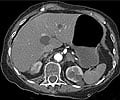
"We showed that it's possible to change traditional pediatric practice to address something new, helping our patients' parents get the help they need to quit smoking," says Jonathan Winickoff, MD, MPH, of the Center for Child and Adolescent Health Research and Policy at MGHfC, who led the study. "We started developing this program more than a decade ago and worked to make it easy to implement in practices across the country. It all came down to finding out what parents want to help them quit and then giving it to them."
Smoking exposes both parents and their children to significant health risks, the authors write, and many parents who smoke have limited access to medical services. In fact, studies have shown that many are more likely to see a physician in the context of care for their children than for their own health needs. Winickoff and his colleagues previously found that offering parents of pediatric patients the opportunity to participate in a smoking cessation program produced significant benefits. But since those studies were conducted at an academic medical center and carried out by specially-trained research staff, it was not clear if such a program would be practical at practices around the country.
Winickoff and his colleague adapted the program used in the earlier study into the Clinical Effort Against Secondhand Smoke Exposure (CEASE) system and designed the current study to test the implementation of CEASE at outpatient practices in the Pediatric Research in Office Settings (PROS) network of the American Academy of Pediatrics. They enrolled 20 practices representing all regions of the country, which were randomly assigned to either intervention or control groups in such a way that factors such as the percentage of patients' parents who smoked were equally represented.
In the intervention group, pediatricians and other practice staff were trained to implement the CEASE system, which includes routinely asking parents about their smoking, encouraging smoking cessation in a way that that incorporates parents' concerns about their own health and that of their children, recommendation and possible provision of nicotine replacement gum or patches, and referral to state-run quitlines. Control practices continued to operate as they had done previously. Data for the current study began to be compiled about a week after intervention programs implemented the CEASE system.
At practices in both groups, parents departing after their child's visit were asked to complete a survey asking about several factors, including their smoking practices. Parents who indicated recent smoking were invited to enroll in the study, and those who enrolled completed a second survey about the services they had received that day – including whether a provider had addressed their smoking, discussed medications or other strategies to help them quit, and referred them to outside smoking cessation services.
Advertisement
"This represents a dramatic shift in the ability of pediatric practices to address smoking at a family level," says Winickoff who is an associate professor of Pediatrics at Harvard Medical School. "Traditionally pediatricians might have thought of smoking as a problem only for their adolescent patients, but now we see they can provide assistance that helps the whole family. If pediatricians address family tobacco use in a consistent manner, it's likely that more kids will grow up in smoke-free homes and fewer of them will go on to become smokers." Winickoff and his colleagues are now looking into ways to broadly implement the CEASE system, including making it available at sites other than health care facilities, such as through Head Start programs.
Advertisement
Source-Eurekalert













